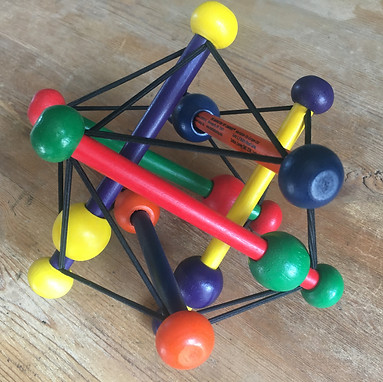Riders
“A way has got to be found of improving and strengthening your own muscular coordination without loss of mobility”
Riding, Thinking Aloud
by Walter Carrington (trained by FM Alexander)
Below I've outlined some of the key components for riding using the principles of the AT.
It requires both stability and flexibility to ride a horse
‘Flexibility’ comes from the ability to move from our joints and ‘stability’ comes from the body tone & control required to stay in balance with a moving horse.
This interplay of flexibility and stability is a continual work in progress, moment by moment, but it is essential to our balance and co-ordination that is so necessary for our horses.
Through the Alexander Technique I can help you to recognise any patterns of unnecessary tensions restricting your movement, so that you can allow the appropriate muscles to work which they will because of the forces placed upon you by your horse.
If you learn how to rebalance yourself in the moment, the forces coming through your horse will inform your muscles of the appropriate tone required.
Unreliable sensory awareness
AT can improve your sense of ‘feel’ making it objective and more reliable.
It feels right... even when it's wrong.

Thinking in activity
The experience of this concept feels very much like you are riding in a bubble. ‘The bubble’ expands your field of attention to include yourself, your horse and the surrounding environment all at the same time.
Psycho-physical unity

In AT we do not make any difference between the parts of the person such as the body, the mind, the thoughts, the feelings, the conscious, the unconscious. FM Alexander talks in the most general way of ‘The Self’ in order to ensure no part is forgotten.
If you accept this principle, you’ll see why the ‘moving individual body parts about’ approach is unlikely to provide a sustainable change to your riding.
Recognition of habit
Do you know where you are ‘interfering’ with yourself that’s potentially preventing you from finding neutral spine or having an independent seat so you are no longer relying on your legs or hands for balance control?

Before - Notice a shortening of the riders back line which takes her shoulders back behind the vertical resulting in a contracted lower back which exaggerates her lumbar curve (around the level of her waistband). There is more of her body in front of her arms than behind and an overall look of being ‘down’ into her pelvis/hips as opposed to coming ‘up’ and out of them.

After - By contrast the rider now has a wonderful lengthening back line (spine) which brings her shoulders over her pelvis. She now has the same amount of her body in front and behind her arms, and her legs are hanging freely from her hips joints. She now has a beautiful poised, toned and balanced look about her.
“It is only when we genuinely attempt to preserve our balance by suppleness and poise rather than strength and grip that we realise how difficult it is to distribute our weight equally on both seat bones”.
The Way to Perfect Horsemanship,
Udo Burger
Use affects function
This is an image of a Tensegrity model (a mash-up of ‘tension’* and ‘integrity’). It is made up of short wooden rods (bones) suspended by a series of elastic bands (tendons/ligaments/fascia etc). You can squeeze and compress it but when you let it go it springs right back to it’s original shape.
This is a fantastic model for human or equine as it is an assemblage of parts, but parts that are so intimately connected, it is impossible to affect one part without altering the whole.
If one part of the structure operates against the design of the whole, the integrity of the entire structure is threatened.
* Note: AT is about learning to release any unnecessary tension.
Primary control
Poll flexion in the horse is the horse flexing at his Atlanto-occipital joint (not the 3rd vertebrae as seen in the photo). You will learn where your own Atlanto-occipital joint is so you too can move from the joint which will influence your horse to do the same.
Startle pattern
In both horse and rider this state is usually counterproductive (unless of course you really are in a life threatening situation, in which case it’s entirely appropriate). You will recognise the ‘freeze, flight or fight’ reaction horses have in response to something that’s frightening them, some are naturally closer to this instinctive reaction than others but they all have it due to being prey animals. It’s part of their survival instincts.
Humans have it too, just not as obvious, as we are predators by nature. We may experience the symptoms of this survival instinct such as anxiety or stress, and the loss of rational thought as our higher cognitive processes give way to the more instinctive and immediate threat. Oftentimes this sets off the ‘startle pattern’ which, if allowed to be held in the body over time results in unhelpful and sometimes painful posture.


